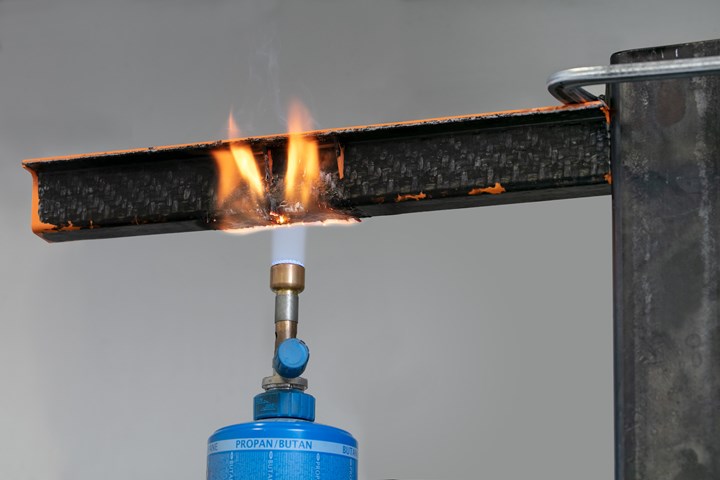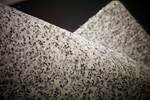Lanxess thermoplastic material targets high flame-retardant properties
Tepex continuous-fiber-reinforced thermoplastic composites variants with a PA6 matrix are certified as UL 94 V-0 and retain a high degree of strength, rigidity and energy absorption.

Photo Credit: Lanxess
Lanxess (Cologne, Germany) has developed three new halogen-free, flame-retardant Tepex continuous-fiber-reinforced thermoplastic composite variants with a PA6 matrix with a focus on automotive, electrical/electronic and industrial applications. Characterized by their highly inherent flame-retardant properties (as a result of high fiber content), Lanxess says these variants are the material of choice when a V-0 classification in a UL 94 flammability test is required, and when the components need to have a high degree of strength, rigidity and energy absorption.
The Tepex dynalite 102fr-RG600(x)/47% variant is reinforced with roving glass fibers, which can be arranged multiaxially to precisely match the load transfer points and load paths in the component according. According to Lanxess the composite is universally applicable and is suitable for high-voltage components of electric vehicle batteries, such as separator plates, cover plates and control unit housings.
In contrast, Tepex dynalite 102fr-FG290 is targeted at applications in the electrical and electronics sector. With its glass fiber-reinforcement, it is said to produce high-quality surfaces that are easy to paint. It is suitable for small housings that are required to comply with the DIN EN 45545-2 standard, “Railway applications — Fire protection on railway vehicles.” Tepex dynalite 202fr is reinforced with carbon fibers and is intended for components subjected to extreme mechanical stress, such as high-strength electronic housings. Lanxess adds that this variant is an alternative to composites made of flame-retardant polycarbonate if their strength and rigidity are not sufficient.
All three structural materials are available in quantities for large-scale applications. They are also available in variants that are electromagnetically shielded by a carbon textile insert in the composite or a metallic surface coating. The UL 94 V-0 classification refers to specimen thicknesses of between 0.5 and 3.5 millimeters. All flame-retardant packages comply with the EU RoHS (Restriction of Hazardous Substances) Directive and the European REACH regulation (Registration, Evaluation and Authorisation and Restriction of Chemicals, Regulation (EC) No 1907/2006)).
In addition to the three new products, Lanxess also offers halogen-free flame-retardant Tepex variants with polycarbonate-based matrices. Most of these are certified as UL 94 V-0.
Related Content
-
Mito Materials graphene amplify composite fly fishing rod performance
Functionalized graphene addition to premium-performance Evos and Evos Salt fly rods by St. Croix Fly enables faster recovery, increased torsional rigidity and improved strength-to-weight ratios.
-
Toray rCF from Boeing 787 is incorporated into ultra-light laptops
Torayca-based aerospace components have successfully been repurposed into the Lenovo ThinkPad X1 Carbon Gen 12, highlighting the ongoing application of recycled composites.
-
KraussMaffei and partners develop sustainable, safe and stylish children’s bike
The Lion Bike is a German-made, injection molded bicycle with 40% recycled carbon fibers with zero scrap and enabling 67% lower CO2 emissions during production.















